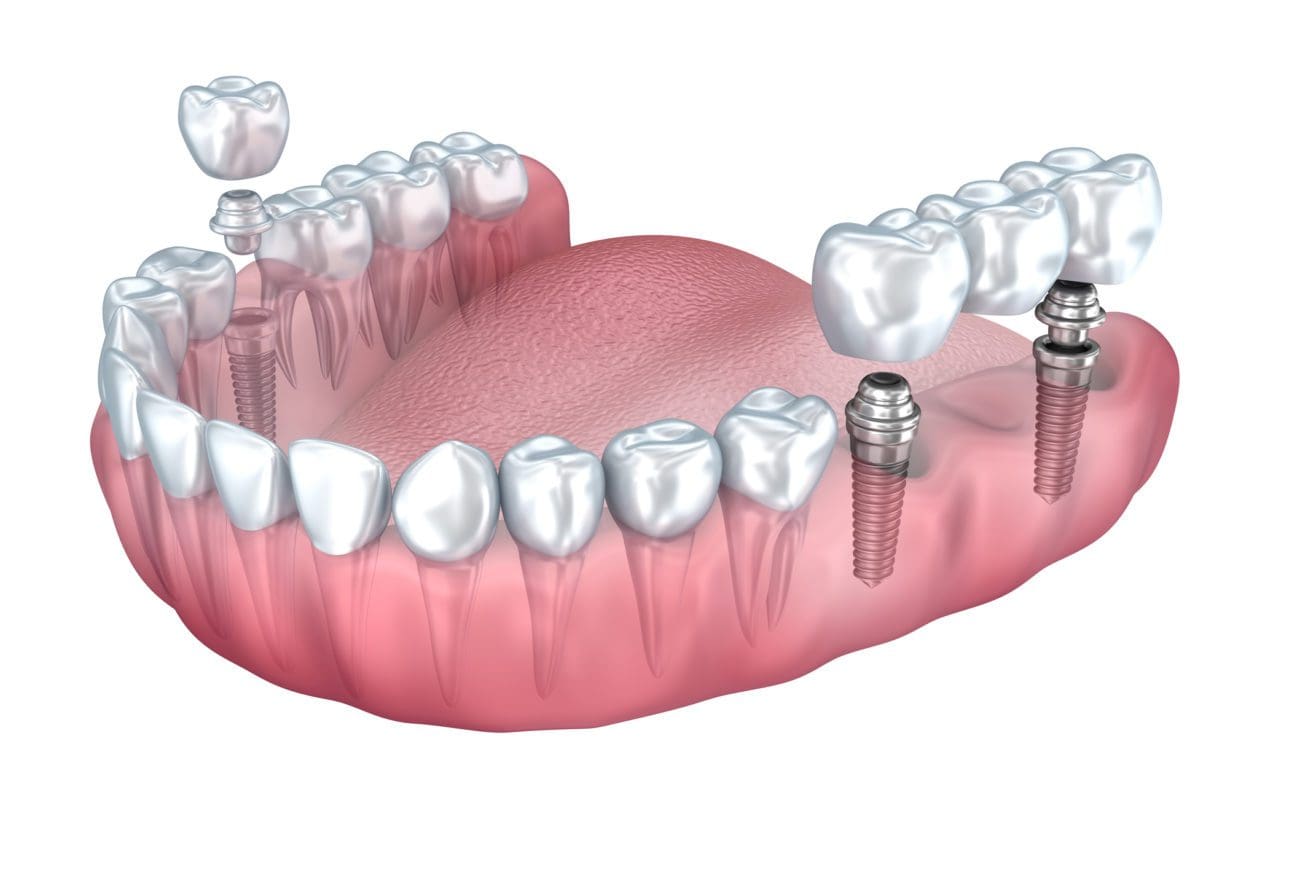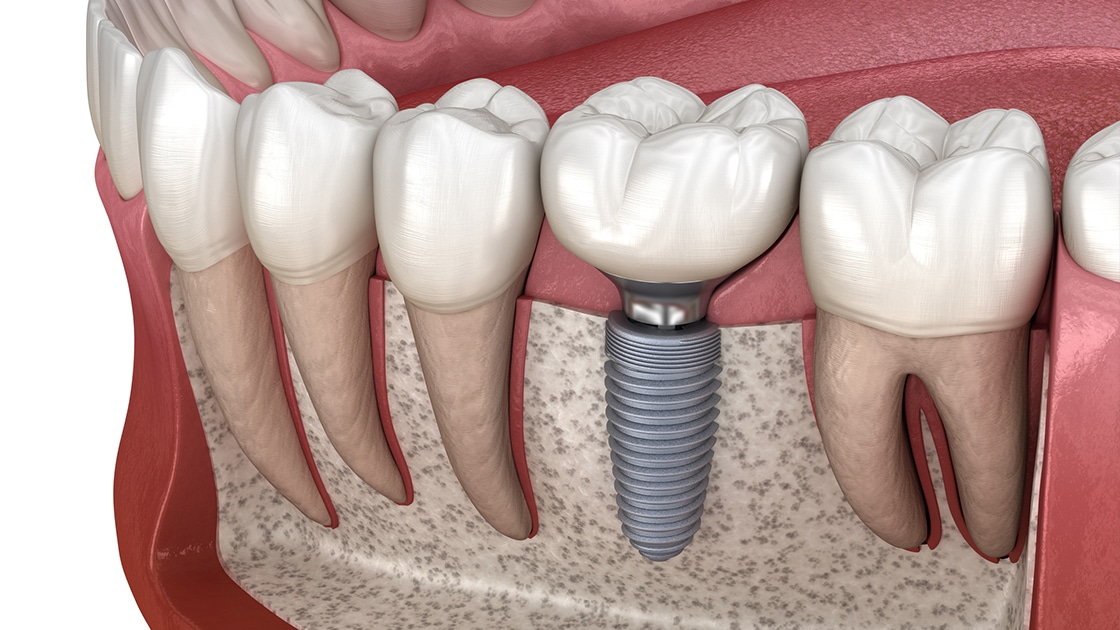4 Easy Facts About Dental Sense Shown
4 Easy Facts About Dental Sense Shown
Blog Article
The smart Trick of Dental Sense That Nobody is Talking About
Table of ContentsNot known Incorrect Statements About Dental Sense The Buzz on Dental SenseDental Sense for DummiesNot known Incorrect Statements About Dental Sense
are clinical devices surgically implanted into the jaw to bring back an individual's ability to chew or their appearance. They give support for artificial (phony) teeth, such as crowns, bridges, or dentures. When a tooth is shed as a result of injury or illness, a person can experience complications such as rapid bone loss, malfunctioning speech, or modifications to eating patterns that cause discomfort.Dental implant systems contain a dental implant body and dental implant joint and may also include an abutment addiction screw. Front tooth filling. The oral implant body is operatively placed in the jawbone instead of the tooth's origin. The dental implant abutment is generally connected to the dental implant body by the joint fixation screw and prolongs via gums into the mouth to support the attached fabricated teeth
(https://dental-sense.webflow.io/)Framework of The Oral Implant System selecting oral implants, speak with your dental supplier regarding the prospective advantages and dangers, and whether you are a candidate for the treatment. Points to think about: Your general wellness is an important consider figuring out whether you are a good candidate for dental implants, how much time it will certainly take to heal, and for how long the implant might remain in area.
Smoking might affect the recovery procedure and reduce the long-term success of the dental implant. The recovery procedure for the dental implant body may take several months or longer, during which time you generally have a temporary abutment instead of the tooth. the dental implant treatment: Very carefully comply with the dental health directions offered to you by your dental provider.
Things about Dental Sense
Implant failing can result in the need for an additional operation to fix or replace the implant system. Brings back the capacity to chew Recovers cosmetic look Helps keep the jawbone from diminishing due to bone loss Preserves the wellness of the bordering bone and gum tissues Aids keep surrounding (neighboring) teeth stable Improves high quality of life Damages to bordering all-natural teeth during dental implant placement Injury to the surrounding tissues during surgical procedure, such as sinus perforation Injury during surgical treatment (for instance, fracture of surrounding jawbone) Insufficient function, such as seeming like the teeth do not attack with each other generally An experience that the tooth hangs or twisting in position resulting from an abutment screw loosening up Implant body failure (looseness of the implant body) because of systemic infection, which might be a lot more likely in patients with uncontrolled diabetics issues as a result of regional infection in bone and gum tissues sustaining the dental implant body due to postponed recovery, which may be much more most likely in people who smoke Difficulty cleaning up the gums around the dental implant, causing bad dental health Without treatment gum disease Post-surgical feeling numb because of nerve impingement or damage Always inform wellness treatment providers and imaging specialists that you have dental implants prior to any magnetic resonance imaging (MRI) or x-ray treatments.
FDA is not familiar with any unfavorable occasions reported for MRI or x-ray treatments with oral implants. Oral implants systems are commonly made from materials that follow global consensus requirements of the International Company for Standardization (ISO) or ASTM International. These standards have details of what makes a secure material.

An oral implant is a framework that changes a missing tooth. With screw-like devices, the cosmetic surgeon inserts a dental implant into the jawbone, and it functions as an anchor for a man-made tooth, called a crown. A tool called an abutment links the artificial tooth to the dental implant. The crown is personalized to fit the person's mouth and match the color of their teeth.
An Unbiased View of Dental Sense
Some people are not eligible for oral implant surgery. It is for oral specialists to operate individuals with: intense illnessuncontrollable metabolic diseasebone or soft cells illness or infectionIf these problems are fixed, a person can have the surgery. In, dental cosmetic surgeons avoid from operating people with: If individuals with any of the above go through oral implant surgical treatment, there is a higher risk of the dental implant stopping working.

Oral dental implant surgical procedure is an individualized procedure. It's not the exact same for everybody. However the adhering to provides a basic overview of what you can expect your dentist, oral cosmetic surgeon, periodontist or prosthodontist to do: Put the implant surgically. Offer you time to heal. Connect the article and last crown, bridge or denture.
Next off, your surgeon will carefully put the oral implant right into your jaw. If your dental implant is near the front of your mouth, your dental practitioner will certainly make a temporary tooth for you to wear up until you heal.
The Best Guide To Dental Sense
Your company can tell you what to expect in your scenario. Throughout the recovery stage, your jawbone ought to fuse to the oral implant. This process, called osseointegration, is crucial for stability and lasting success. This procedure can take anywhere from 3 to nine months. In some cases, it might take longer.
Once your dental implant visit this web-site heals, your dental professional can attach the joint (small port article) and your final repair (crown, bridge or denture). This usually takes about one hour to finish and may require a 2nd minor surgical treatment. You shouldn't feel any type of discomfort throughout your oral implant treatment since your provider will use drug to numb your gum tissues.
Report this page